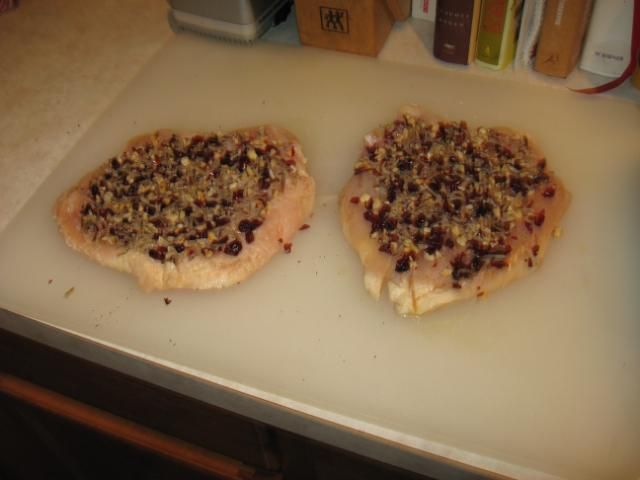“Wild rice (Zizania palustris) is an annual grass that ripens about the end of August and into Sept. Processing requires drying the rice, then parching it, then removing the hull. It can be done strictly by hand, using a kettle (big ceramic pots pre-euro trade) and a paddle to parch and taking the hull off by "jigging" or "dancing" the rice in a pit. More industrial processors around here are not exactly high tech, but they may use propane to heat big metal barrels that have paddles (instead of people) to keep the rice tossing. Even then, the rice man checks each batch as it parches, because each strain is different and the amount of moisture may be different too. You gotta know what you're doing.
Here’s a good article on the process showing the range from family processing to larger processors. Even the largest around here is not like the processing that commercial processors do (for paddy rice, like ol’ Uncle Ben's). Check the slideshow with this after you read it. In spite of the names, these are all Indian people.”
By the way, she just tossed that off as a quick email response, gang - See why I love that girl?
So there ya have it! Chances are, if you’re looking to get the genuine article at your local Safersons, it ain’t happenin’. A little poking around online should net what you’re after though.
Suffice it to say that this stuff, real wild rice, is like nothing you’ve ever had before; it’s like good ale versus Super Lite beer; and it’s addictive, once you’ve had it, you’ll never wander yonder again.
We’re gonna do up a nice dish with this as an opener, and then segue into some follow up meals; why, ‘cause if you’re like us, you’ll make too much rice for the first meal and then have a container sitting around that can either get thrown out after a week, or be put to further good use as it should be!
So here goes: Today we cover the Big Kahuna knock out first meal, then on to the leftovers down the line.
Urb's Chicken Breasts with wild rice, dried cranberries and crushed hazelnuts.
We took some nice natural chicken breasts, skinned and boned ‘em, butterflied ‘em out, and then pounded them a bit so they’re a nice, even thickness. Two points to consider here: One, this may look like fancy pants cookin’, but it ain’t; you could do this in the field if you wanted, (Seriously – Platt and I ate REAL well during our deer hunt – Being out and about does not mean you have to sacrifice good cooking, that’s what chuck boxes were made for…) Secondly, this recipe works even better with wild game; Quail, Pheasant, Partridge, or Dove would all rock with this – The wild rice, dried fruit and nuts with animal is simply the best, (Ever heard of Pemican?). OK, onward!

After the flesh is pounded out, (And yes, you should have a meat hammer if you don’t already), we put it in a nice little marinade of white wine, orange and grapefruit juice, with a little salt, pepper, onion powder, and celery seed. Let it sit for about ½ hour, then pull the breasts out and reserve the marinade.




NOTE: As with ALL poultry, always follow safe handling practices with the flesh and everything you use to contain and handle it!
We cooked the wild rice to the slightly dry side, then mixed equal portions of rice, dried cranberries, and chopped hazelnuts, (The hazelnuts were out of season, so we toasted them to get 'em back to a nice, perky condition). I put a spoon or so of bacon fat in the mix, (Everybody’s favorite cheat!), since chicken is lean and a little fat helps everything get together cozy-like; I also rehydrated a couple of our home grown smoked cherry peppers and chopped them into the mix for a nice, smoky taste with a touch of heat. Spread an even layer of the mixture over the meat, and then grab your kitchen twine. Roll the breasts into nice logs and tie them off.






The meat goes into an oiled pan on high heat and is evenly browned; once that’s done, pop ‘em into a baking dish, cover it with foil and toss that into a 350º F oven to finish. We use our schmancy thermometer to make sure we achieve 170º F internal temp, rather than using a timer. We took the remaining rice/cranberry/nut mix and tossed it on top of the breasts.




Once it’s done, pull it out and let it rest at least 10 minutes, as it will continue to cook and get to the magic done temp – Remember, NEVER cut flesh that’s just come out of the oven, you’ll guarantee dry and nasty if you do!
While the chicken is cooking, grab your marinade and use it to deglaze the pan you browned the breasts in. Mix all that up nicely and get the naughty bits off the pan bottom, and then set it on a low simmer to reduce; we took our down to roughly 25% and then added a couple tablespoons of butter, making it syrup-thick so it coats a spoon nicely when tested.


Our accompaniment for this wonderful stuff was nice, fresh green beans with lemon butter, and some Texas toast. Cut nice thick rounds of the rolled breast, (Remembering to take the twine off…), arrange and drizzle with the reduced sauce, and go wild! We had ours with a nice, dry white wine and a cooking show on the tube – fact is, ours looked a LOT better than theirs, and so will YOURS!





Enjoy!

No comments:
Post a Comment